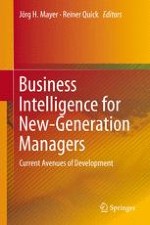2015 | OriginalPaper | Chapter
Applicability of Environmental Scanning Systems: A Systematic List Approach to Requirements Criteria
Authors : Stefan Bischoff, Jörg H. Mayer, Timm Weitzel, Reiner Quick
Published in: Business Intelligence for New-Generation Managers
Publisher: Springer International Publishing
Activate our intelligent search to find suitable subject content or patents.
Select sections of text to find matching patents with Artificial Intelligence. powered by
Select sections of text to find additional relevant content using AI-assisted search. powered by
